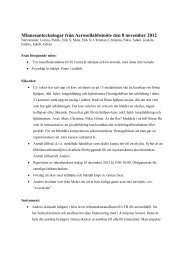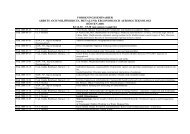ESTIMATING CLOUD DROPLET EFFECTIVE RADIUS ... - CAST
ESTIMATING CLOUD DROPLET EFFECTIVE RADIUS ... - CAST
ESTIMATING CLOUD DROPLET EFFECTIVE RADIUS ... - CAST
- No tags were found...
You also want an ePaper? Increase the reach of your titles
YUMPU automatically turns print PDFs into web optimized ePapers that Google loves.
<strong>ESTIMATING</strong> <strong>CLOUD</strong> <strong>DROPLET</strong> <strong>EFFECTIVE</strong> <strong>RADIUS</strong> FROM SATELLITE REFLECTANCE DATAModified Exponential Approximation___________________________________________________________________________________________________outgoing light in the direction (v, ϕ) (Figure 2). The main processes are single and multiplescattering, emission and absorption (Liou, 2002, p. 152). A portion of the light is scatteredand emitted downwards, entering the underlying layer where the same processes occur.Outgoing light is here re-entering the layer above or scattered further downwards. Thisprocedure is run for all the layers within the cloud and eventually the light is eithertransmitted through the whole cloud or the intensity becomes negligible (Figure 3).vv 0φNϕϕ 0ΔzFigure 2 Viewing geometry of incoming and reflected light.I(0,µ,φ)Top τ = 0I(τ n ,µ,φ)I(0,-µ,φ)nτ = τ nI(τ n ,-µ,φ)I(τ c ,µ,φ)Bottomτ = τ cI(τ c ,-µ,φ)Figure 3 Principle of radiative transfer. The intensity is expressed in terms of optical thickness τ , (τ c is thecloud optical thickness) incident angle µ ≡ cos(v), and relative azimuth angle φ = ϕ 0 - ϕ7




